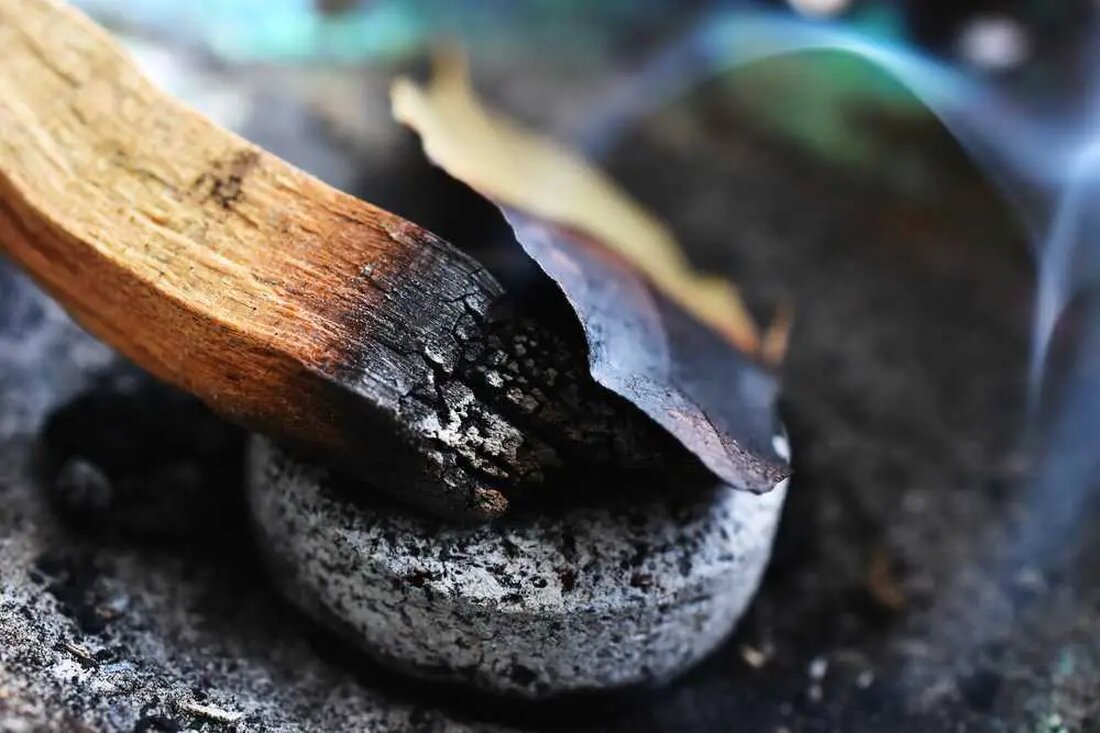The Health Benefits of Burning Bay Leaves: From Ancient Tradition to Modern Use
The Importance of Bay Leaves in History The use of bay leaves has a long history, dating back to ancient times. They have been revered in various cultures in both cooking and medicine. Bay leaves originally come from ancient Greece, where they were prized for both their medicinal abilities and their symbolism of honor and victory. In Greek mythology, the god Apollo is said to have transformed a nymph named Daphne into a laurel tree, forging a close connection between laurel leaves and the divine. Also the Oracle of Delphi, famous for...

The Health Benefits of Burning Bay Leaves: From Ancient Tradition to Modern Use
The importance of bay leaves in history
The use of bay leaves has a long history dating back to ancient times. They have been revered in various cultures in both cooking and medicine. Bay leaves originally come from ancient Greece, where they were prized for both their medicinal abilities and their symbolism of honor and victory. In Greek mythology, the god Apollo is said to have transformed a nymph named Daphne into a laurel tree, forging a close connection between laurel leaves and the divine. The Oracle of Delphi, famous for her prophecies, also allegedly used the “laurel” in her rituals to see the future. It was originally believed to be the laurel, but later it turned out that it was probably the poisonous oleander, which was often confused with the laurel.
Use in the kitchen
Bay leaves have long found a place in kitchens around the world. Their unique aroma and taste add a special touch to soups, stews, sauces and marinades. They are usually added whole and removed before serving because they have a firm texture. They are particularly popular in Mediterranean and Indian cuisine as they give the various ingredients a nuanced, earthy taste.
Spiritual meaning
Bay leaves are also particularly valued in the spiritual world. The ancient Romans, inspired by their story with Apollo, attributed prophetic powers to the herb. In modern spiritual circles, burning bay leaves, also known as “smudging,” is believed to purify the environment, driving out negativity and letting in positivity. Bay leaves are often burned along with other sacred herbs such as sage or palo santo.
Relaxation for anxiety with bay leaves
The scent of burnt bay leaves could not only be pleasant but also have therapeutic effects. Bay leaves contain linalool, a compound also found in plants like mint and lavender that is known for its calming properties. Aromatherapy suggests that inhaling certain scents can stimulate olfactory receptors, which then communicate with the emotional regulation centers of our brain.
The Evidence: A 2010 study showed that mice that inhaled linalool vapor were more sociable, less aggressive, and less anxious. Another 2016 study found that rats given bay leaf extract were less anxious and showed fewer signs of depression. However, the linalool content differs in bay leaves and lavender. While lavender oil contains 25-38% linalool, the linalool content in bay leaf oil is usually less than 7%. A 2009 study showed that linalool may be able to relieve mild anxiety, but may not be as effective in highly stressful situations. Although it doesn't necessarily replace other anxiety treatments, you might benefit from adding bay leaves to your wellness routine if the scent calms you.
Other potential benefits of bay leaves
Although there is no specific research on the effects of burning bay leaves, some potential benefits suggest bay leaves, including:
- Wundheilung: Die antimikrobiellen Eigenschaften von Lorbeerblättern wurden traditionell zur Wundheilung genutzt.
- Reduzierung von Entzündungen: Bestimmte Verbindungen in Lorbeerblättern können Entzündungen reduzieren.
- Brustkrebs: Einige Tierversuche deuten auf die mögliche Verwendung von Lorbeerblättern in der Behandlung von Brustkrebs hin.
- Vorbeugung von Nierensteinen: Es gibt begrenzte Hinweise darauf, dass Lorbeerblätter Nierensteine verhindern können.
- Management von Typ-2-Diabetes: Lorbeerblätter können bei der Kontrolle des Blutzuckerspiegels helfen.
- Kontrolle von Anfällen: Begrenzte Studien weisen auf die antikonvulsiven Eigenschaften von Lorbeerblättern hin.
- Traditionelle Anwendungen: Linderung von Magen-Darm-Beschwerden, Behandlung von Infektionen und Fieber, Linderung von Arthritis-Schmerzen und Linderung von Kopfschmerzen.
Precautions when burning bay leaves
- Diabetes-Patienten: Konsultieren Sie Ihren Arzt, da Lorbeerblätter den Blutzuckerspiegel beeinflussen können.
- Allergien: Wenn Sie allergisch auf Lorbeerblätter in Ihren Mahlzeiten reagieren, vermeiden Sie diese Praxis.
- Vor einer Operation: Vermeiden Sie zwei Wochen vor einer Operation Lorbeerblätter, da es zu Wechselwirkungen mit der Anästhesie kommen kann.
- Atemwegsprobleme: Menschen mit Asthma oder ähnlichen Erkrankungen sollten vorsichtig sein.
- Schwangerschaft und Stillzeit: Fragen Sie immer einen medizinischen Fachmann, bevor Sie etwas Neues ausprobieren.
How to Burn Bay Leaves Safely
- Vorbereitung: Sorgen Sie immer für Wasser als Sicherheitsmaßnahme.
- Auswahl der Blätter: Wählen Sie getrocknete Lorbeerblätter. Frische Blätter brennen nicht so gut.
- Auswahl einer Schale: Eine feuerfeste Schale, möglicherweise mit Aluminiumfolie ausgekleidet, ist am besten geeignet.
- Anzünden der Blätter: Zünden Sie ein Ende an und pusten Sie die Flamme aus, damit es glimmen kann.
- Sichere Umgebung: Stellen Sie eine gute Belüftung sicher und halten Sie Kinder und Haustiere fern.
- Brenndauer: Lassen Sie die Blätter 10-15 Minuten glimmen.
- Aufräumen: Entsorgen Sie die Asche sicher, nachdem sie abgekühlt ist.
Burning bay leaves, an ancient tradition with roots in both culinary and medicinal uses, promises a variety of potential benefits, from relieving anxiety to improving health. Although more research is needed to confirm certain claims, for most people this practice can be a safe and fragrant addition to their daily routine, provided the necessary precautions are taken.

 Suche
Suche
 Mein Konto
Mein Konto
